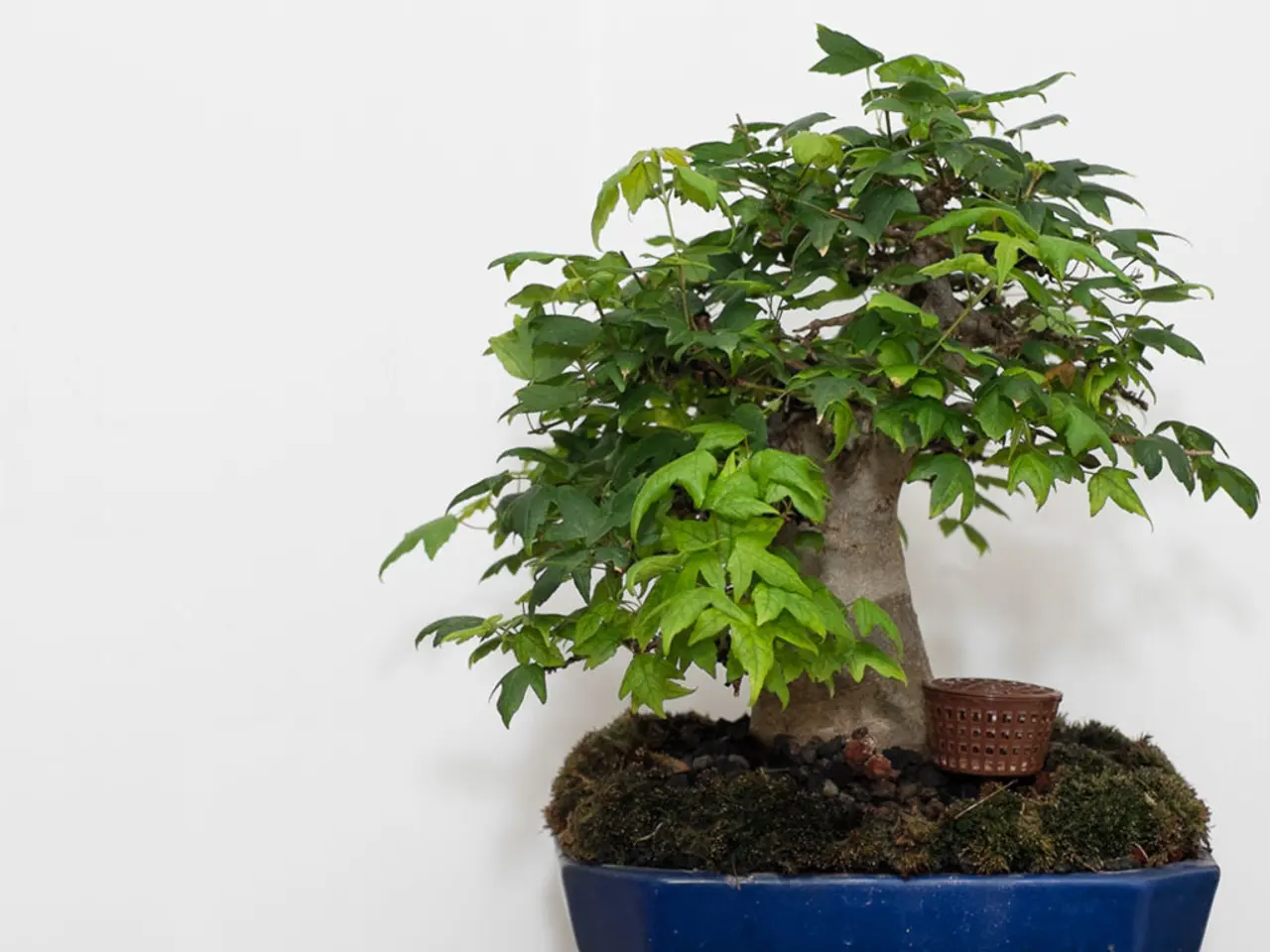Basics of Bonsai: Grasping Essential Tree Care Requirements
In the world of Bonsai, caring for these miniature living sculptures extends far beyond the basics of lighting, watering, temperature, and soil nutrients. For the dedicated enthusiast, advanced techniques elevate Bonsai care to the level of creating and maintaining a miniature living work of art.
Firstly, strategic structural pruning is a key element in shaping the aesthetic appeal of a Bonsai. Pruning is not just about cutting but visualizing the future shape of the tree. This involves removing dead, diseased, or poorly placed branches, applying the "one-third rule" (never removing more than one-third of foliage at once), and removing branches that disrupt the aesthetic balance. Cuts are made just above outward-facing buds to encourage growth in the right direction and keep wounds hidden.
Energy flow management is another essential technique. Skilled Bonsai growers read the tree’s energy flow to direct growth. For example, pinching strong branches can redirect growth to weaker areas, fostering a balanced and aged appearance. This also includes techniques like using sacrifice branches to thicken the trunk and promote taper—where certain branches are allowed to grow freely for a while to thicken the trunk before being removed.
Bonsai wire is used to bend and shape branches and trunks precisely. Wiring enables creating exhibition-level silhouettes and structures for both primary and secondary branches. Proper wiring timing and technique prevent damage and encourage desired forms.
Timing is crucial, with deciduous Bonsais best pruned in late winter when dormant, flowering species right after bloom, and evergreens during their active growth. Species-specific considerations, such as pines and junipers requiring precise timing, are also essential.
Advanced techniques specific to conifers include needle plucking and candle pruning, which regulate needle density and growth points to refine the tree’s shape and health. They help maintain energy balance within the tree and enhance fine branching.
Repotting with precision is another advanced technique. It involves selecting the correct soil mix for species, carefully untangling roots, trimming roots sparingly, and repotting at optimal growth stages to minimise stress.
Pest management and fertilizing with Bonsai-specific products ensure overall tree vigor and health beyond basic nutrient supply. Using targeted fertilizers and pest control, such as insecticidal soap or neem oil, suited for Bonsai is crucial.
Repotting frequency depends on species, age, and growth rate; generally, Bonsai trees require repotting every 2-5 years. A well-draining, nutrient-rich soil mix is essential for a thriving Bonsai, containing 30-40% Peat Moss or Compost, 20-30% Perlite or Vermiculite, 30-40% Pine Bark or Coconut Husk, and 10-20% Fertilizer.
While these techniques may seem complex, they collectively emphasise artistic vision, detailed physiological understanding, and precise manual skills. By mastering these techniques, Bonsai enthusiasts can create and maintain miniature living sculptures that are truly works of art.
However, it's important to remember that be vigilant for pests like spider mites, mealybugs, and scale, which can thrive in indoor environments. Be cautious not to over-humidify, as this can lead to root rot and other issues. Instead, maintain ideal humidity between 40% to 70%, with some species requiring even higher levels. Grouping plants together can also increase surrounding humidity.
Attempting to confine a Bonsai tree indoors year-round can lead to a lack of vitality, as these trees typically thrive on seasonal changes. Therefore, it's essential to provide them with the natural environmental changes they need to thrive.
[1] Advanced Bonsai Techniques: A Comprehensive Guide, John Naka (2000) [2] The Art of Bonsai, Makoto Hara (2005) [3] Bonsai: The Art of Growing Miniature Trees, William N. Valavanis (1992)
- A keen interest in fashion-and-beauty can lead to exploring various artistic techniques, much like learning the intricate art of Bonsai.
- Mastery of energy flow management in Bonsai is similar to that of navigating lifestyle choices, where one learns to direct energy towards personal growth and growth areas in one's life.
- Pruning a Bonsai tree with precision and an eye for aesthetic balance may remind one of the critical decisions related to food-and-drink, such as selecting nutritious ingredients and planning meals for optimal well-being.
- Home-and-garden enthusiasts might find similar satisfaction in repotting techniques for Bonsai, as care and attention are given to providing the perfect environment for a living species to thrive.
- Educational resources on Bonsai-specific pest management and nutrient requirements are valuable for understanding the needs of one's pets, as they require proper care and attention to maintain their health and vitality.
- The need for travel in diversifying Bonsai tree species can parallel the importance of exploration and learning in education-and-self-development, as acquiring new knowledge fosters personal growth.
- Admiring the precision and craftsmanship in cars is akin to the joy one finds in viewing a beautifully sculpted Bonsai tree, as both showcase the fusion of art and engineering.





